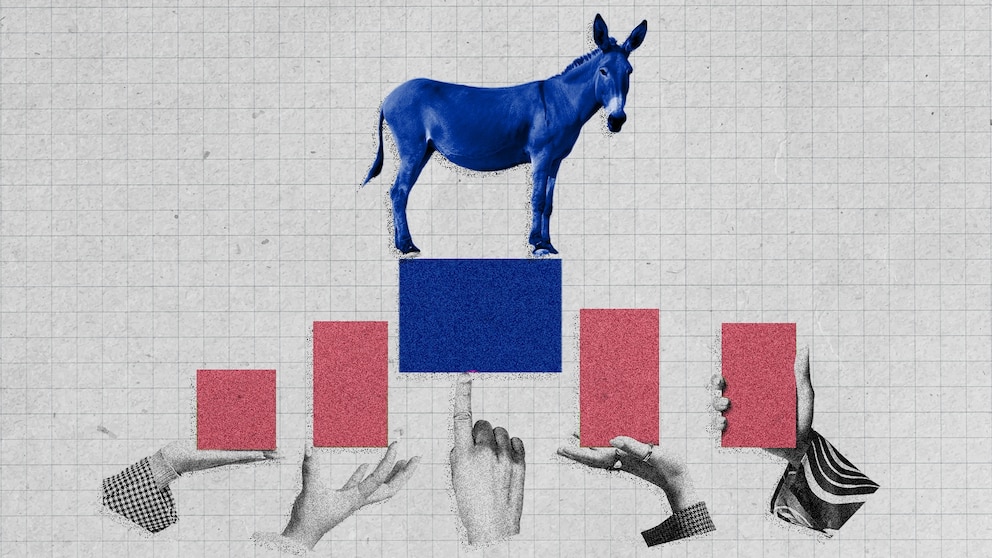
[ad_1]
Democrats just scored a big win in an election on Tuesday: Democrat Hal Rafter defeated Republican James Guzofski 56 percent to 44 percent in a special election to fill a Republican-held seat in the New Hampshire state House. Assuming Democrats win another special election in November in a solidly blue seat, Rafter’s win means the New Hampshire state House will be tied at 198 Republicans and 198 Democrats (with two independents and two seats still vacant). On paper, that will end full Republican control of New Hampshire state government. (In practice, whoever controls the House could change by the day depending on legislator absences.)
It’s also the latest example of Democrats outperforming in a special election, a trend that could be a harbinger of a very good year for Democrats in 2024. This New Hampshire district is 6 percentage points more Republican-leaning than the nation as a whole, according to a weighted average of the 2020 and 2016 presidential results in the district.* Yet Rafter won by 12 points — an 18-point Democratic overperformance above their partisan baseline.
“Hang on,” you might be saying. “Only 2,800 people voted in this election.” (New Hampshire House districts are really tiny.) “Does that really mean anything?” On its own, no — any single special election can be influenced by any number of factors, including candidate quality or parochial issues. But Democrats have been posting special-election overperformances of that magnitude all year long, in all kinds of districts. And on average, they have won by margins 11 points higher than the weighted relative partisanship of their districts.
That’s more than just an impressive streak — it’s a potential sign of a Democratic wave election in 2024. In each of the past three election cycles, a party’s average overperformance in all special elections in a given cycle has been a close match for the eventual House popular vote in the eventual general election — albeit a couple of points better for Democrats.
And according to Daily Kos Elections (albeit using a different methodology), the correlation between special-election results and the House popular vote has been strong since at least the 1989-90 cycle — though, importantly, there have been some exceptions, like 1997-98.
Still, it would be premature to go ahead and assume Democrats will win the popular vote by 11 points in 2024. For one thing, blowouts of that magnitude are rare historically — the House popular vote margin has hit double digits only once in the last 36 years (in 2008, when it was also D+11). And for another, it flies in the face of what we’re seeing in the polls. According to a RealClearPolitics-style** average of generic congressional ballot polls (i.e., polls that ask people whether they intend to vote for a Democrat or for a Republican for Congress, without naming specific candidates) conducted entirely since Aug. 1, Republicans have a slight advantage, 45.2 percent to 44.0 percent.
So at least one of these indicators is going to be wrong. It could be the polls; early general-election polling is not very predictive. Most polls right now are being conducted among registered voters, not likely voters, which could also explain some of the discrepancy. But it would be quite unusual if the polls were wrong by 12 whole points (the difference between the D+11 environment implied by the special elections and the R+1 environment implied by the polls). Polls aren’t perfect, but the common belief that they are totally unreliable is a myth.
On the other hand, we could have another 1997-98 on our hands and the special elections could turn out to not be predictive after all. The types of people who vote in low-turnout special elections tend to be different from the types of people who vote in regularly scheduled elections: Lower turnout generally means a more college-educated electorate, and college graduates have gotten more Democratic in recent years. That could be why special-election overperformance has consistently been a couple of points more Democratic than the House popular vote over the past three cycles. However, college graduates were disproportionately Democratic in 2020 and 2022 too, and Democrats didn’t consistently do this well in special elections in those cycles. So something seems to be different this time that the education realignment doesn’t fully explain.
So we’re just going to have to wait and see. It’s reasonable for Democrats to be cautiously optimistic about their chances in the 2024 election based on what we’re seeing right now in special elections, but there is still plenty of uncertainty about how much those results will actually tell us about what happens in 2024.
*Specifically, three parts 2020, one part 2016.
**Whereby each pollster’s polls are averaged, and then those averages are averaged. We do this so that pollsters with a lot of polls don’t have an undue influence in the average.
[ad_2]
Source link
